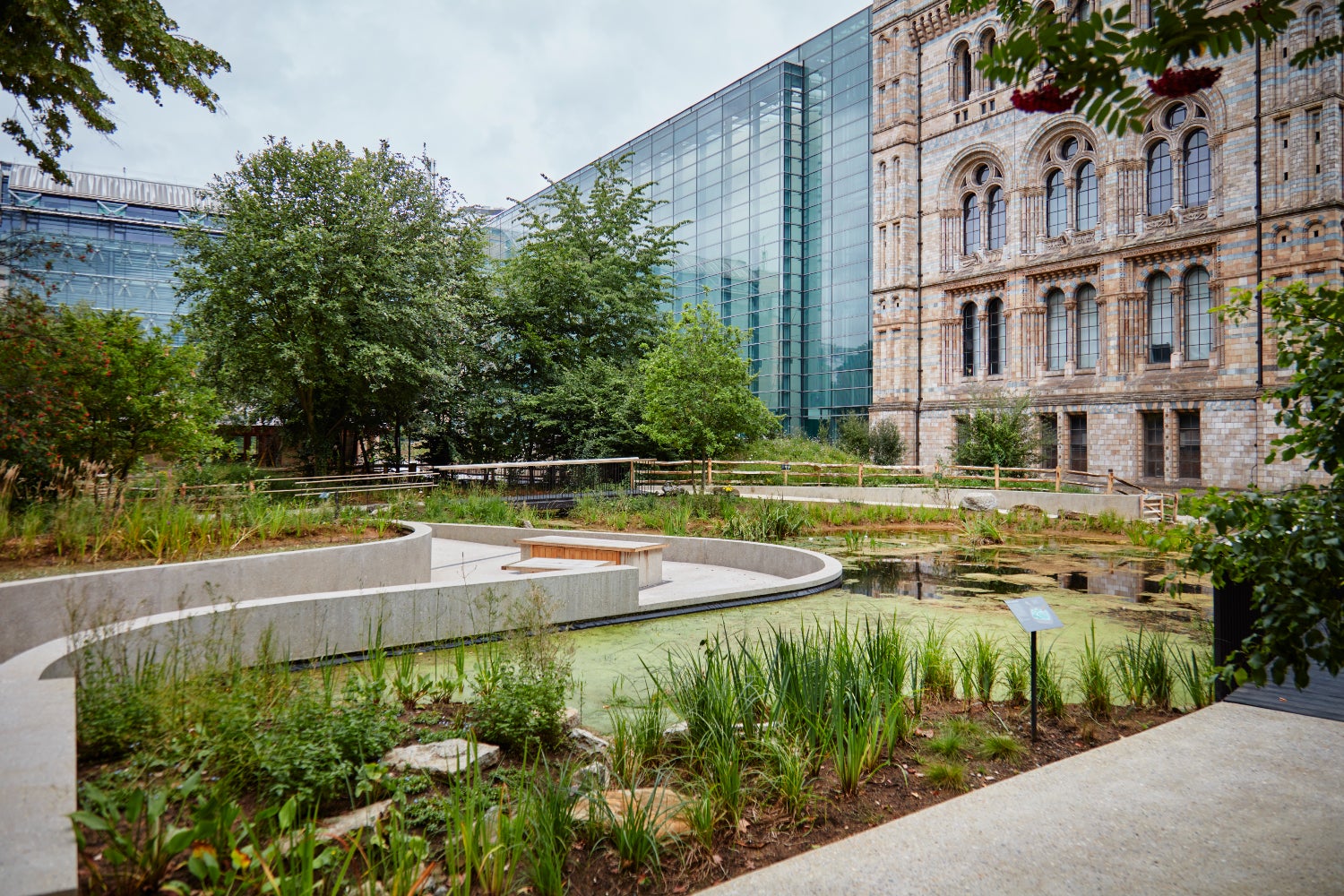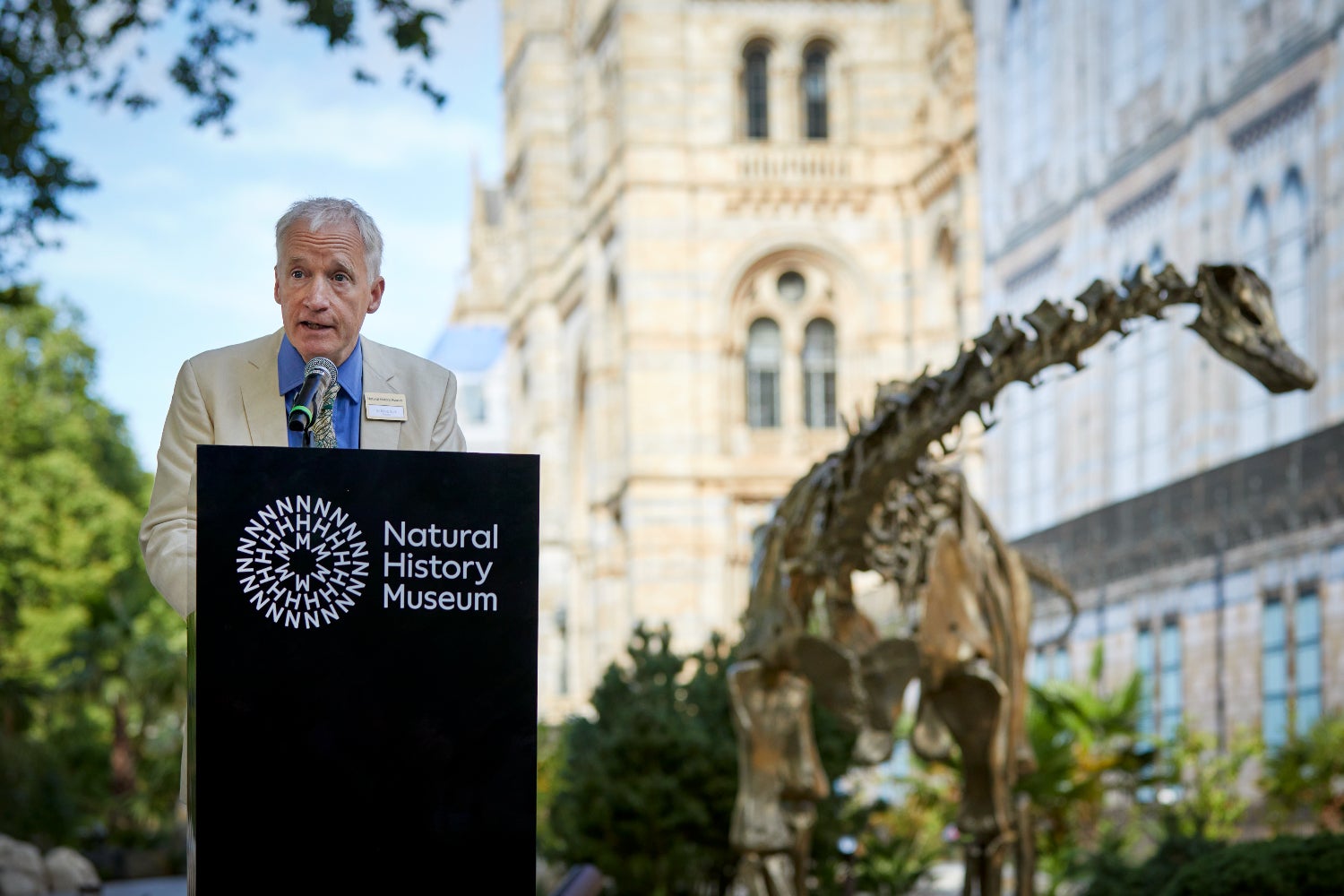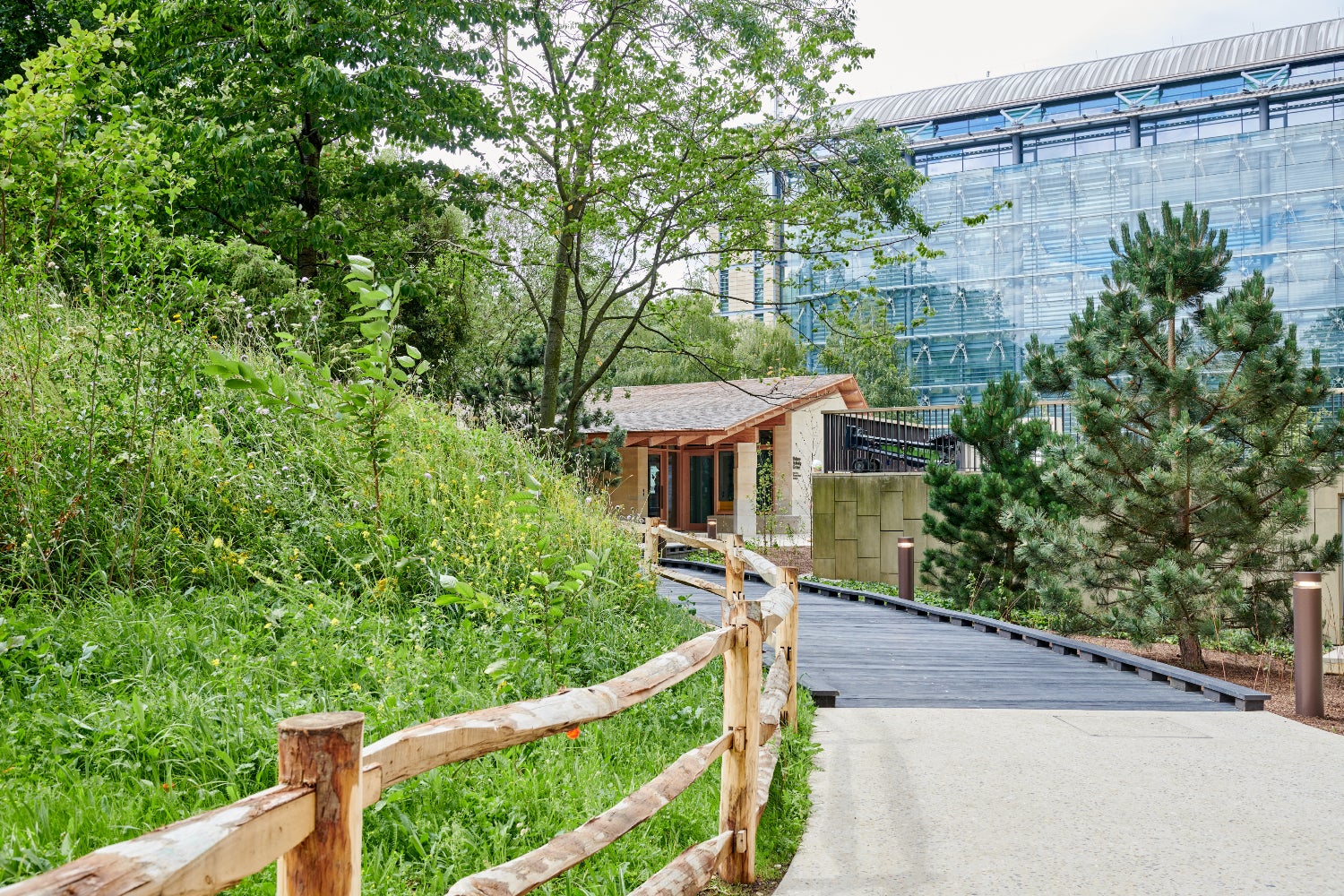The Natural History Museum is set to open a massive green space in central London with a giant, brand new bronze dinosaur to support nature, scientific research and education in the city.
Five acres of land surrounding the South Kensington building have been transformed into two gardens that tell the story of the changing natural world: the Nature Discovery Garden and the Evolution Garden.
The new exhibit will open on Thursday as a free-to-visit “open-air gallery” and a “living laboratory” to help nature recover in the face of climate change, according to the museum.

The £25 million project is expected to become one of the most intensively studied urban natural heritage sites in the world.
To mark the project’s completion, a new bronze Diplodocus, which local schoolchildren have named “Fern,” was unveiled in Evolution Garden’s Jurassic landscape on Tuesday.
The Nature Discovery Garden was also opened to the public as a space for visitors and scientists to learn about the biodiversity found in Britain’s urban spaces.
Museum director Dr. Doug Gurr called it a “national learning, science and public engagement effort to make our towns and cities healthier, more sustainable places to live.”
Speaking at the Gardens on Tuesday, he said: “Today is just the beginning.
“In the months and years ahead, nature here will thrive and grow, scientific understanding will grow and millions of young people will have the opportunity to reconnect with nature, take part in new outdoor workshops and get involved in the vital work of understanding how nature recovery can begin on our very own soil.”

In the Evolution Garden, visitors can explore natural history stretching back 2.7 billion years, told through an immersive timeline of plants and rocks from different geological eras across the UK.
Moving to the present day, and then the Anthropocene, the paving stones are embedded with crushed glass, ceramics and even pieces of plastic, signalling humanity’s increasing impact on the natural world.
The gardens also feature a second bronze dinosaur, a Hypsilophodon, native to the UK, on display next to Fern.
In the Nature Discovery Garden, a network of ponds and plants is already brimming with toad tadpoles, baby frogs, newts, mandarin ducks, dragonflies, lily pads and duckweed.
The team also built a nature activity centre within the gardens that combines facilities for scientific research, training space for future urban ecologists and a base for school workshops.
Scientists plan to collect “eDNA samples” of the gardens’ wildlife and monitor how this changes over time.
A network of 25 scientific sensors will also collect environmental and acoustic data – from underwater recordings of ponds, insect buzzing and bird calls to traffic noise – to help understand how the city’s nature is changing and what can be done to help it recover.

The museum’s new “data ecosystem” will help scientists quickly and accurately collect, enrich, and share multiple biodiversity data types, along with environmental data such as water chemistry, from a variety of sources.
John Tweedle, director of the museum’s British Nature Centre, said the aim was to build “a very detailed digital picture of the nature we have here”.
“We can start to look at how nature in the city adapts, which species adapt well, which species don’t and which species become invasive,” he told the PA news agency.
“We’ll study how different management practices benefit different wildlife species and then share that with the actual land managers,” he said, using the new grasslands as an example.
“This is applied research. We’re looking at how to develop ways to better understand wildlife and rapidly assess the wildlife that’s out there, but specifically how we can use that information to understand how the changes we make may or may not benefit wildlife.”
In terms of design and construction, the museum adopted sustainable approaches such as diesel-free sites, not sending waste to landfills, peat-free fertilizers, a carbon budget, recycled materials, and building a drainage system that collects rainwater for the plants.
We are a natural history museum; sustainability and biodiversity are in our DNA. Everyone else will benefit from this plan.
Keith Jennings, Director of Real Estate, Projects and Master Planning
“We’re a natural history museum – sustainability and biodiversity are in our DNA,” said Keith Jennings, director of real estate, projects and master planning.
“We needed to show we could build sustainably, otherwise we wouldn’t be true to our values.”
“That’s been a real challenge,” he said, adding that materials and how construction was being done were “really big issues.”
“But it’s our job to push the boundaries,” he said. “Everyone else will benefit from this plan.”
The Urban Nature Project has been funded by a range of trusts, foundations, businesses and individuals, including Amazon Web Services, The National Lottery Heritage Fund and Evolution Education Trust, The Cadogan Charity and Garfield Weston Foundation.







